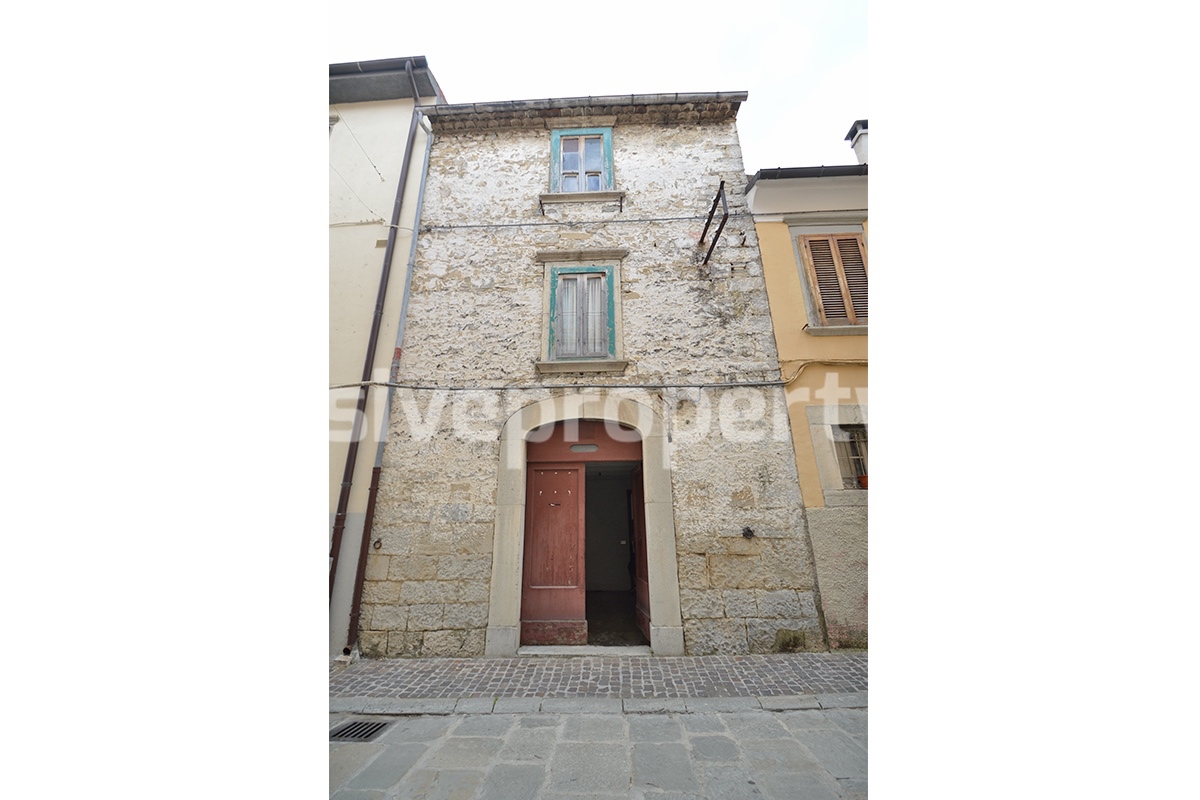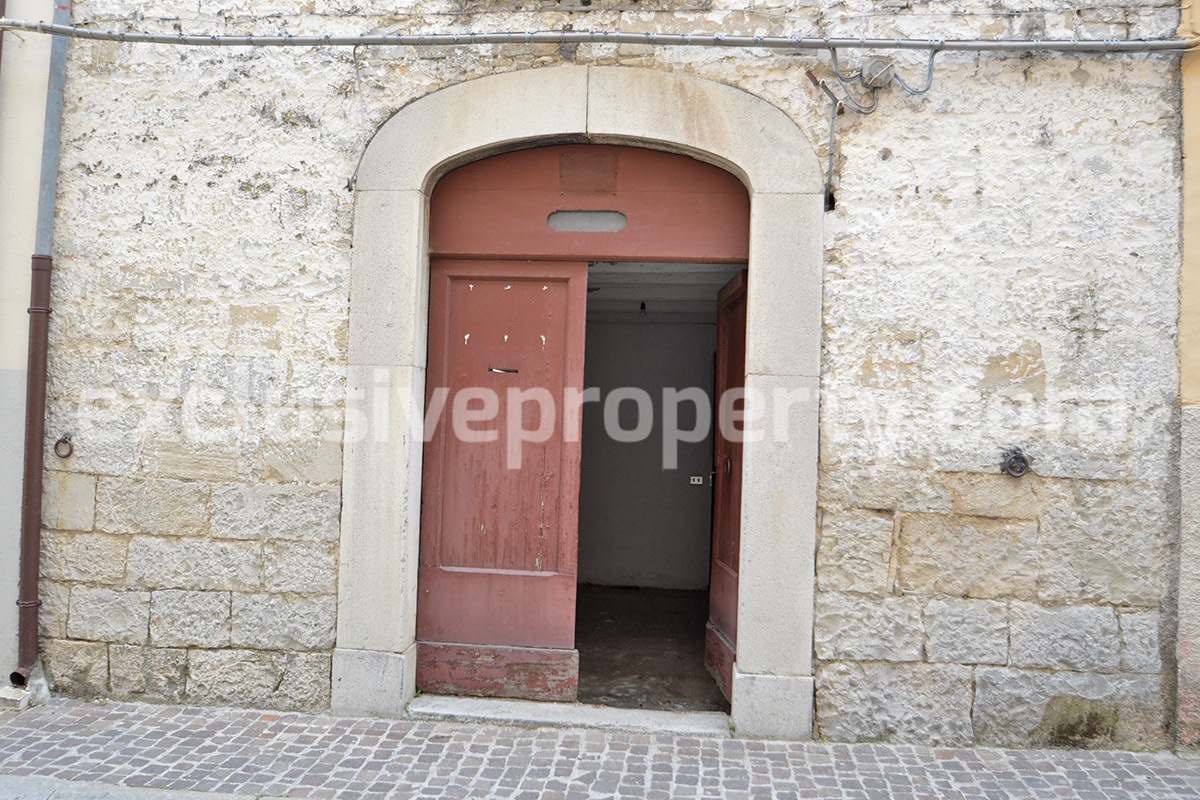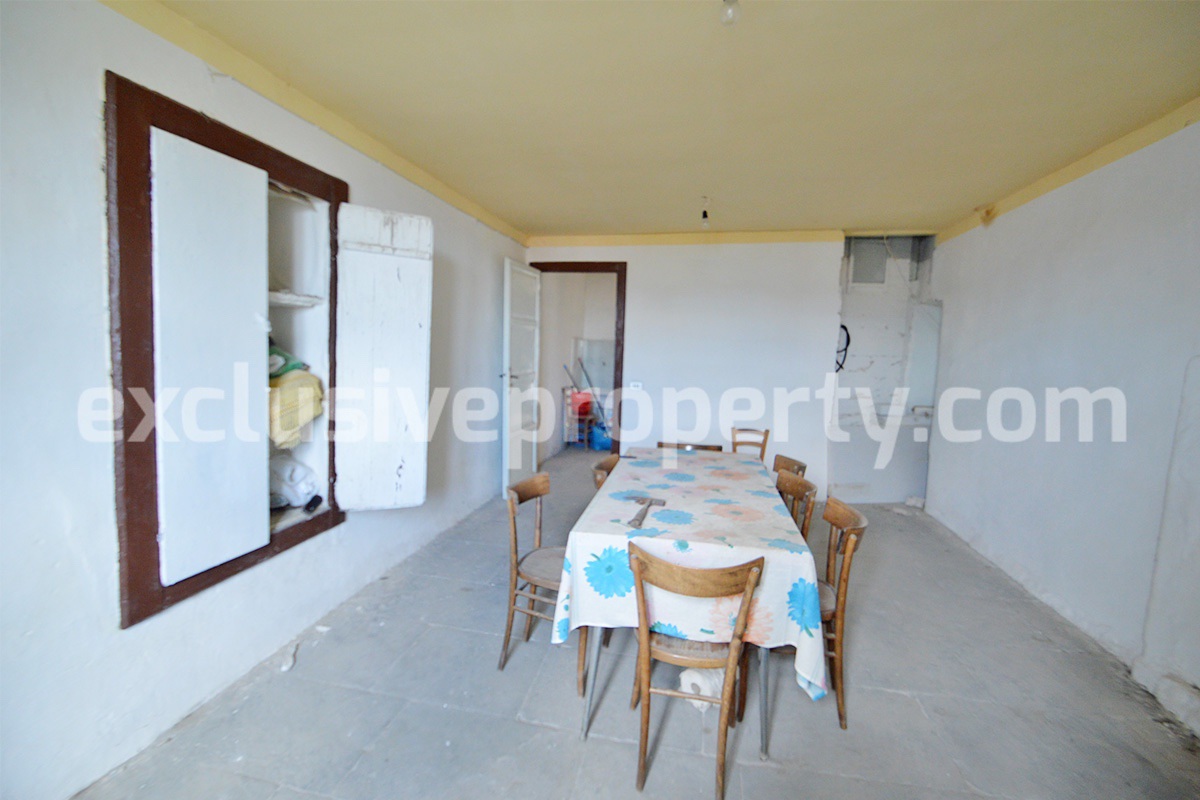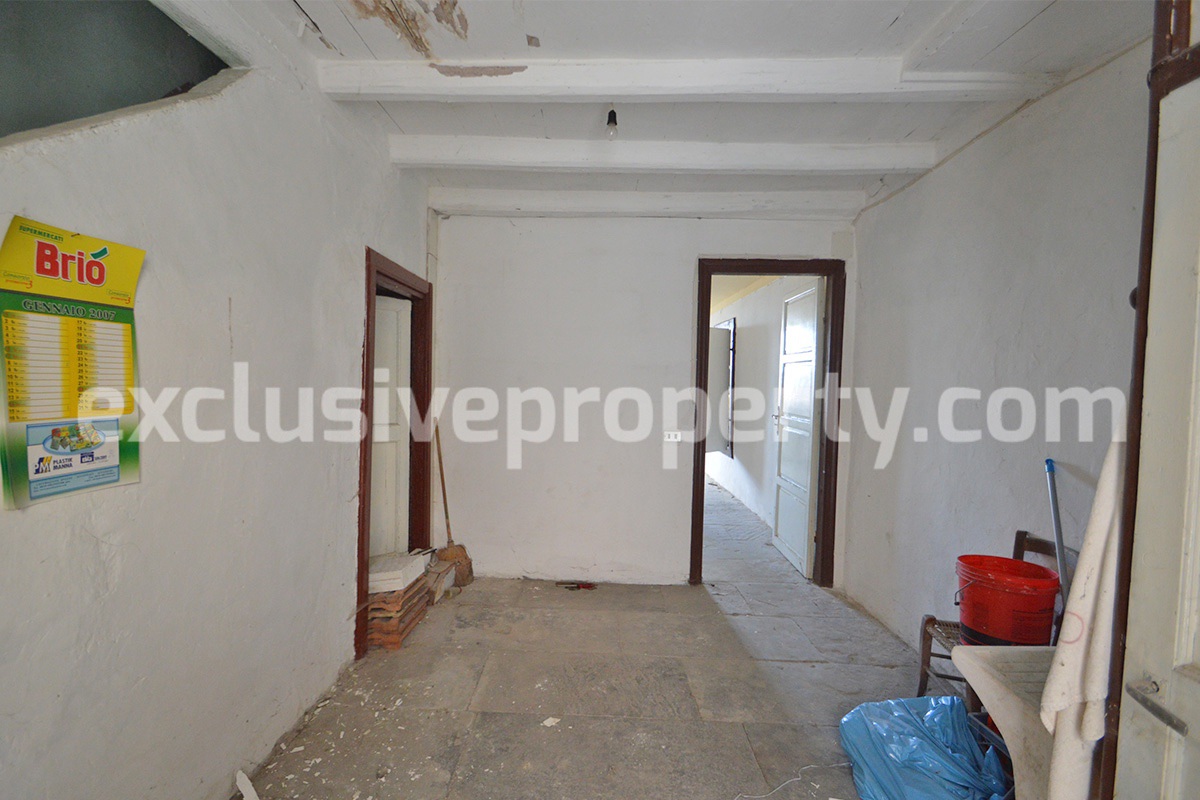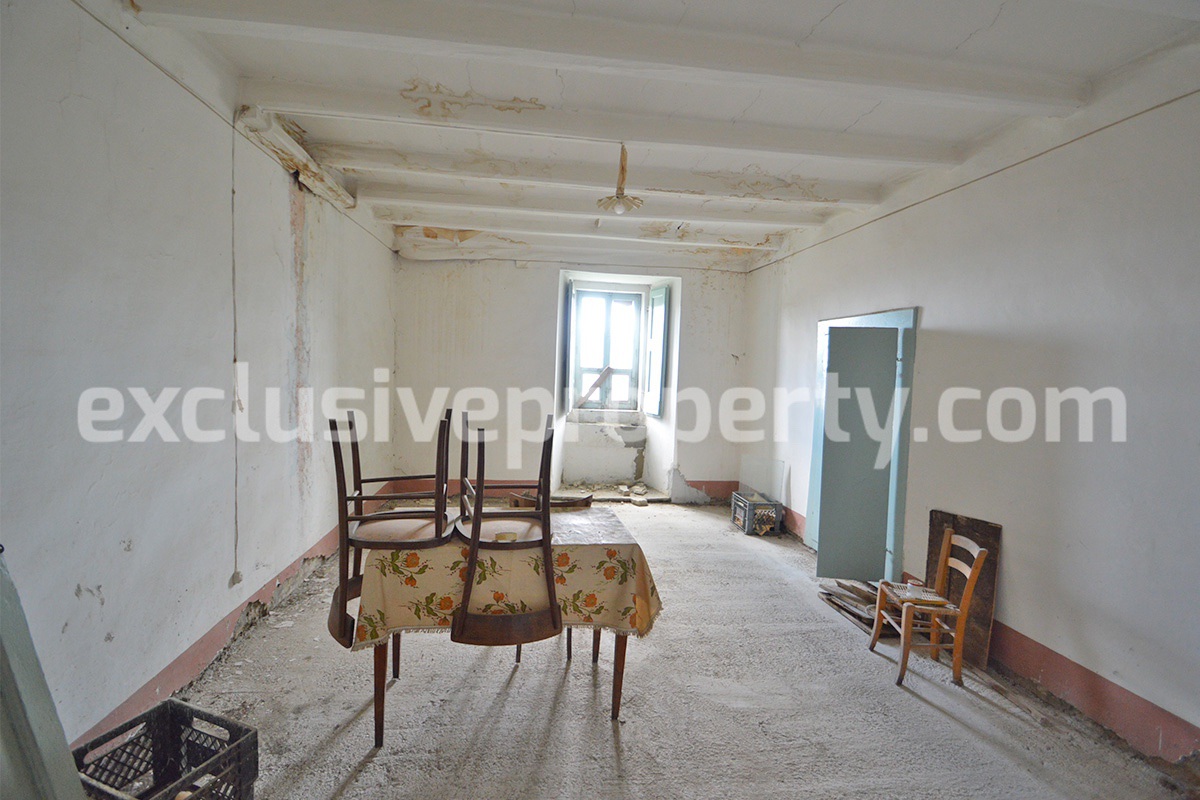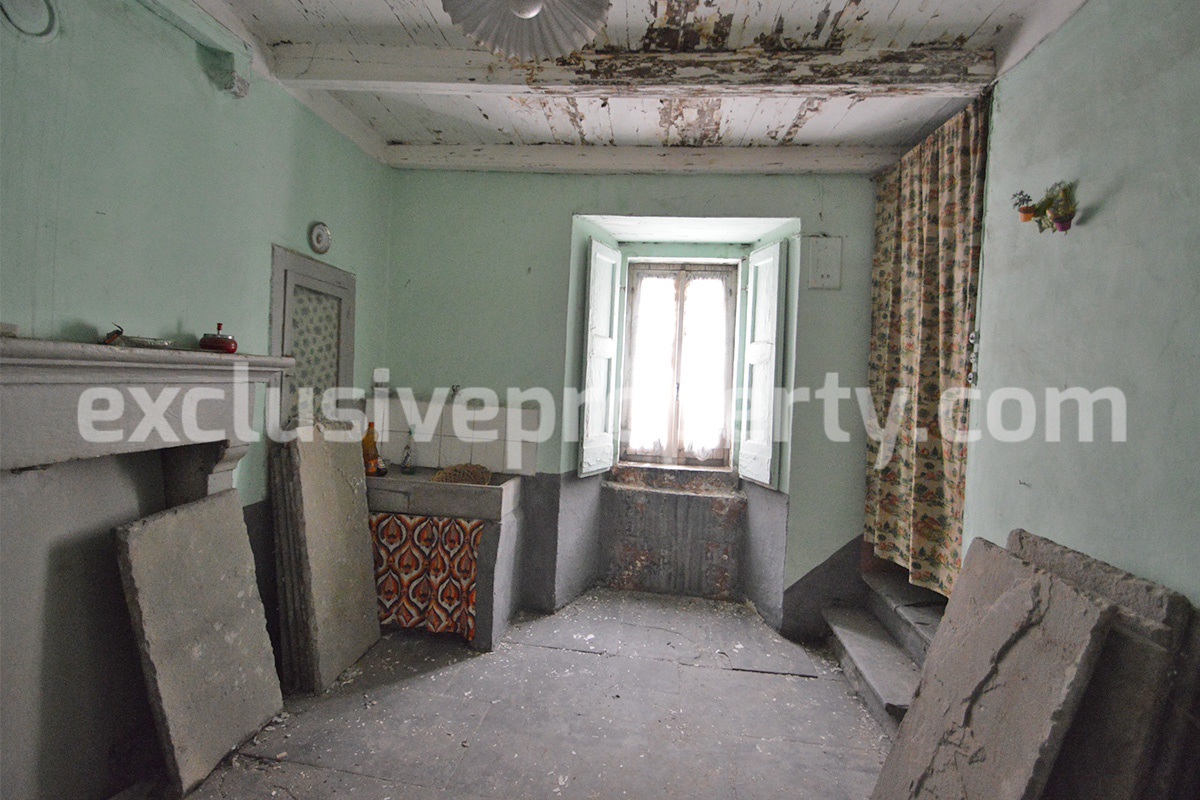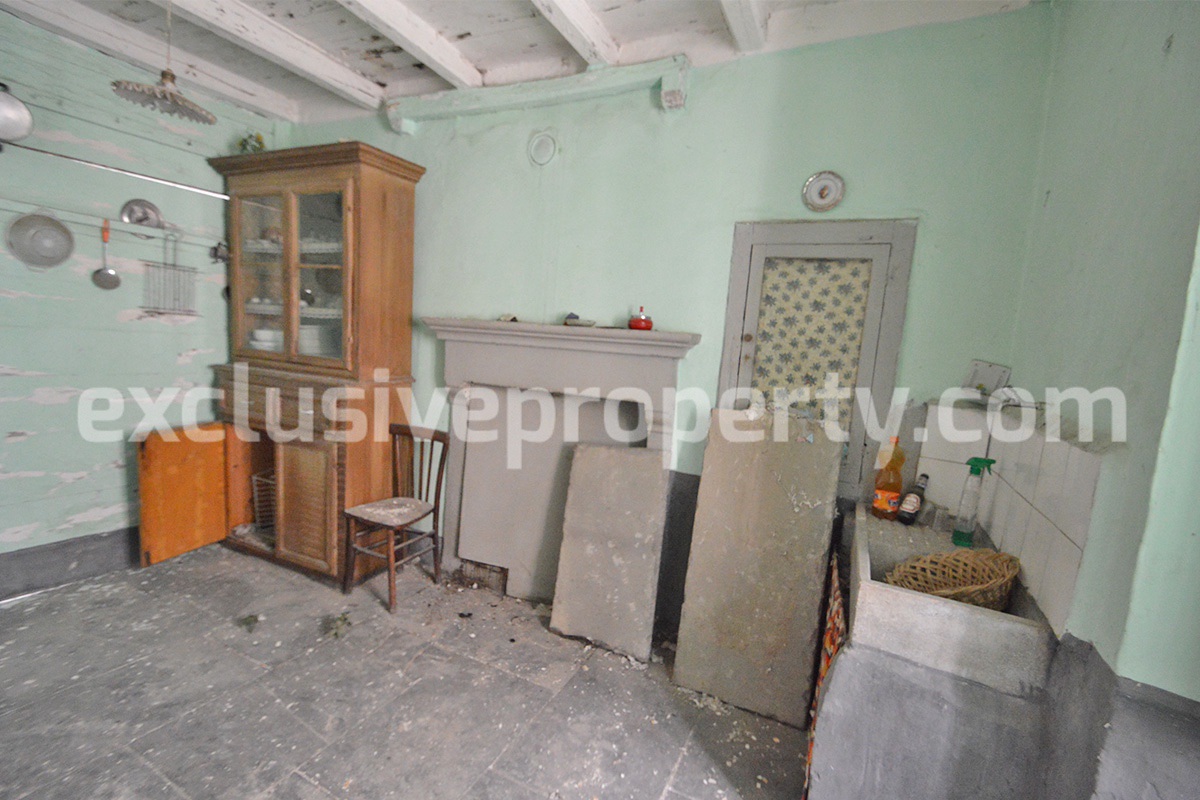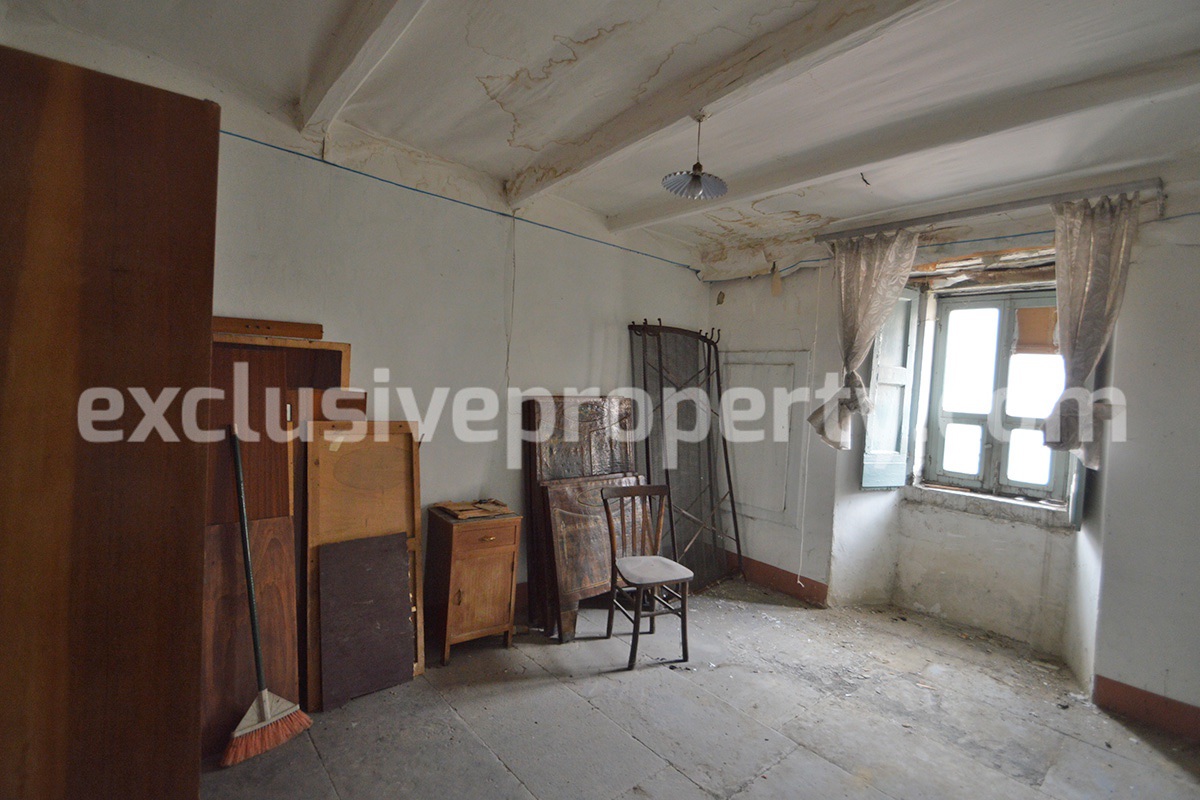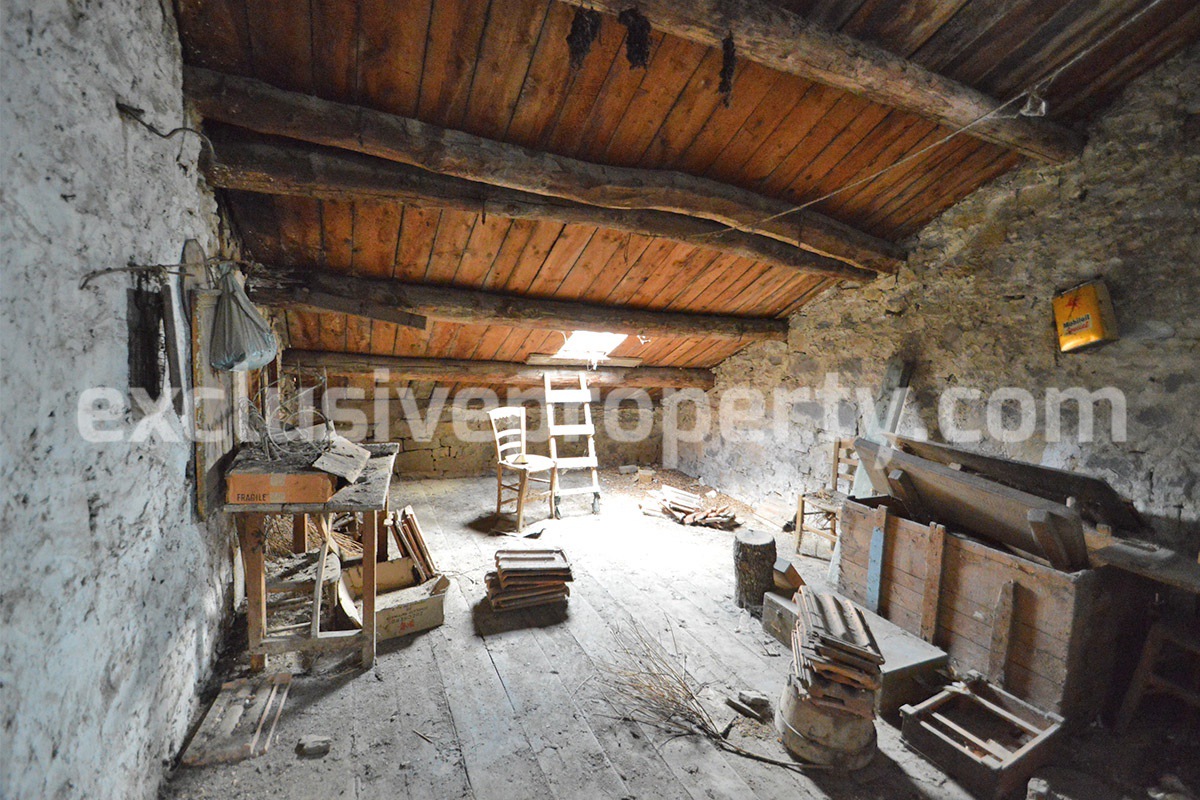At a glance
Like this property?
Call now +39 340 0624970 (english language), +39 333 2529230 (italian language) or REQUEST DETAILS for this property!
Description
Stone house on five floors (attic included) for about 200 sq m to be restored for sale in Agnone, is known for the manufacturing of bells by the Marinelli Bell Foundry.
The property has a garden of about 200 sq m.
On the GROUND FLOOR we find the entrance on the living room, on the UPPER FLOOR a hall and a kitchen with fireplace, on the SECOND FLOOR a bedroom and an attic.
In the BASEMENT there are two rooms.
The house needs renovation.
The SERVICES are to be reconnected during the works.
AGNONE is well known in Molise for its art, history and culture. It is an old town full of artistic doors, old vintage buildings, churches at least is an authentic open air museum. Small (with only five thousand inhabitants) but beautiful art town located at the border of the "National Park of Abruzzo Lazio and Molise" in the province of Isernia, in Molise, a region that stretches between the Apennines and the Adriatic Sea. Agnone lies on a rocky hill 840 meters a.s.l. and it is nestled in a fascinating environment among the green, dense forest rich in flora and fauna, interrupted by small prairies and surrounded by mountainous landscapes. As the village is located in the heart of the ancient Sannio, the surrounded area is rich in important Osco-Samnite archaeological finds. (Sannio was a historical and geographical area of central-southern Italy, inhabited by the Samnites between the 7th or 6th century B.C. and the early first centuries A.D.) Many archaeological artifacts, such as the funerary stele (an upright slab with a sculptured design) of Vibia Bonitas, which is kept at the "Teatro Italo Argentino" located in the old part of the town, were recovered here. According to recent studies and archaeological finds, Agnone was built on the ruins of the ancient Aquilonia, a Samnite city, destroyed by the Romans in 239 B.C. During the later centuries, Agnone has been a fief of the Angevin, the Caracciolo, and the Gonzaga families. This important town is also famous for the handicraft and the manufacture of metals; the flagship of this tradition is represented by the presence in the city of the oldest foundry of bells in the world : the Pontificia Campane Marinelli Foundry), the oldest bell foundry in Europe, which even today works regularly, established in the early Middle Ages. It is one of the few factories licensed to use the papal coat of arms. For more than 800 years, the Foundry Marinelli has been molding bells for the town of Agnone, the region of Molise, Italy, Europe, and the whole world. Another excellence of the village of Agnone is the Confetto Riccio, whose origins are very ancient. The first official testimony dates back to 1839. It is a larger-than-normal sugared almond with a wrinkled, soft and crumbly surface. It is consumed fresh and can be stored under vacuum. The raw materials are: sugar, Avola almonds, gum arabic and natural flavorings. The almond is sprinkled with gum Arabic to help cover it with the sugar. Syrup sugar is poured into the "bassina" (large copper cauldron), while it rotates, which crystallizes and enlarges the almond and gives it its characteristic wrinkled shape. Agnone is the city of the oldest fire rite in the world, called ‘Ndocciata from ”‘ndocce” – torches. The ‘Ndocciata is a procession of men who, clothed in ancient costumes, bring big torches made with fir tree down the main street of the city. The torches are put together in groups of 2,4,6,8, up to 20. The men bearing torches walk and pirouette, astonishing the audience. The ‘Ndocciata was originally a pagan rite celebrating the winter solstice and testifying the ancient link between man and fire. Fire was essential for our ancestors who practiced Transhumance to warm up and transform milk into cheese. The town has all necessary amenities as: shops, fitness center, supermarket, pizzeria, restaurants, bakery, bars, etc.
Show MoreAmenities
- Cellar
- Fireplace
- Garden
Distances
- Airport: 107 km/1 hr 39 min from Pescara international airport, 143 km/1 hr 53 min from Napoli airport, 210 km/2 hr 33 min from Roma airport and 289 km/2 hr 56 min from Bari airport.
- Coast: 70 km/57 min from the beach of San Salvo Marina, 78 km/59 min from the beach of Marina di Vasto, 67 km/59 min from Fossacesia Marina, Costa dei Trabocchi, where you can taste typical cuisine and enjoy unique landscapes, for your moments of relax.
- Skiing resort: 91 km/1 hr 47 min km from the ski lifts of Passo Lanciano, 43 km/59 min from the Roccaraso/Rivisondoli ski lifts (with 24 ski lifts it has the largest number of lifts in Abruzzo) and 75 km/1 hr 13 min from the Campitello Matese.
- Train station: 72 km/59 min from the train station of Vasto-San Salvo.

